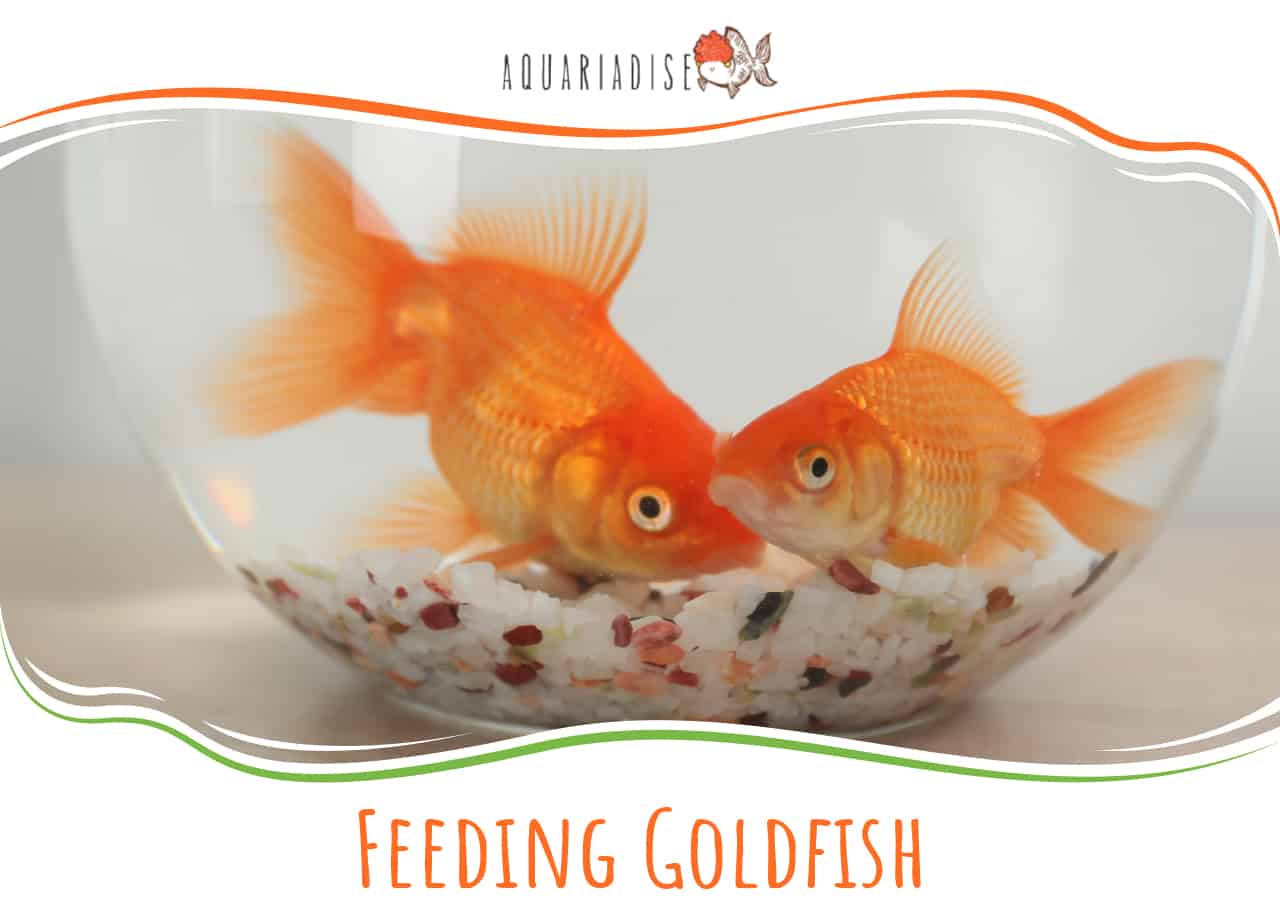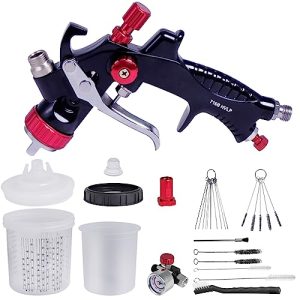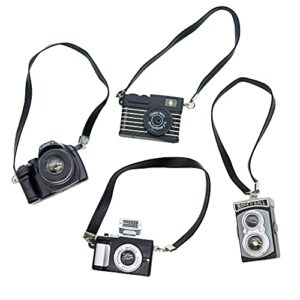Contents
If you’ve recently become the proud owner of a goldfish, you may be wondering how to properly feed and care for your new aquatic friend. This feeding guide for goldfish provides all the essential information you need to ensure your goldfish stays healthy and nourished. From understanding the nutritional needs of your fish to the best feeding schedule, this article is your go-to resource for keeping your goldfish happy and thriving.
Feeding Schedule
Feeding your goldfish properly is one of the most important aspects of goldfish care. In order to ensure their health and happiness, it is crucial to establish a feeding schedule that meets their dietary needs. In this article, we will guide you through the frequency of feeding, the amount of food, and the feeding times for your goldfish.
Frequency of Feeding
Goldfish have a high metabolism and need to be fed multiple times throughout the day. As a general rule of thumb, it is recommended to feed your goldfish two to three times a day. However, keep in mind that overfeeding can lead to health issues, so it’s important to find the right balance.
Amount of Food
When it comes to feeding your goldfish, it is important to feed them an appropriate amount of food. Overfeeding can lead to issues such as swim bladder disorder, which can cause buoyancy problems in the fish. A good rule of thumb is to feed your goldfish an amount of food that they can consume within two minutes.
Feeding Times
Establishing a consistent feeding schedule is essential for the well-being of your goldfish. It is recommended to feed them at the same times each day, as this helps regulate their digestion and prevents overeating. Choose times that are convenient for you, but try to space out the feedings evenly throughout the day.
Types of Goldfish Food
Choosing the right type of food for your goldfish is crucial for their overall health and growth. Here are the different types of goldfish food available, each with its own benefits and considerations.
Pellets
Pellets are a popular choice when it comes to feeding goldfish. They come in various sizes and are made specifically for the nutritional needs of goldfish. Pellets are convenient to use and provide a balanced diet for your fish.
Flakes
Flakes are another commonly used goldfish food. They are easy to feed and come in a variety of formulas, offering a good balance of nutrients. However, it is important to make sure the flakes are not crushed too finely, as this can lead to digestion issues.
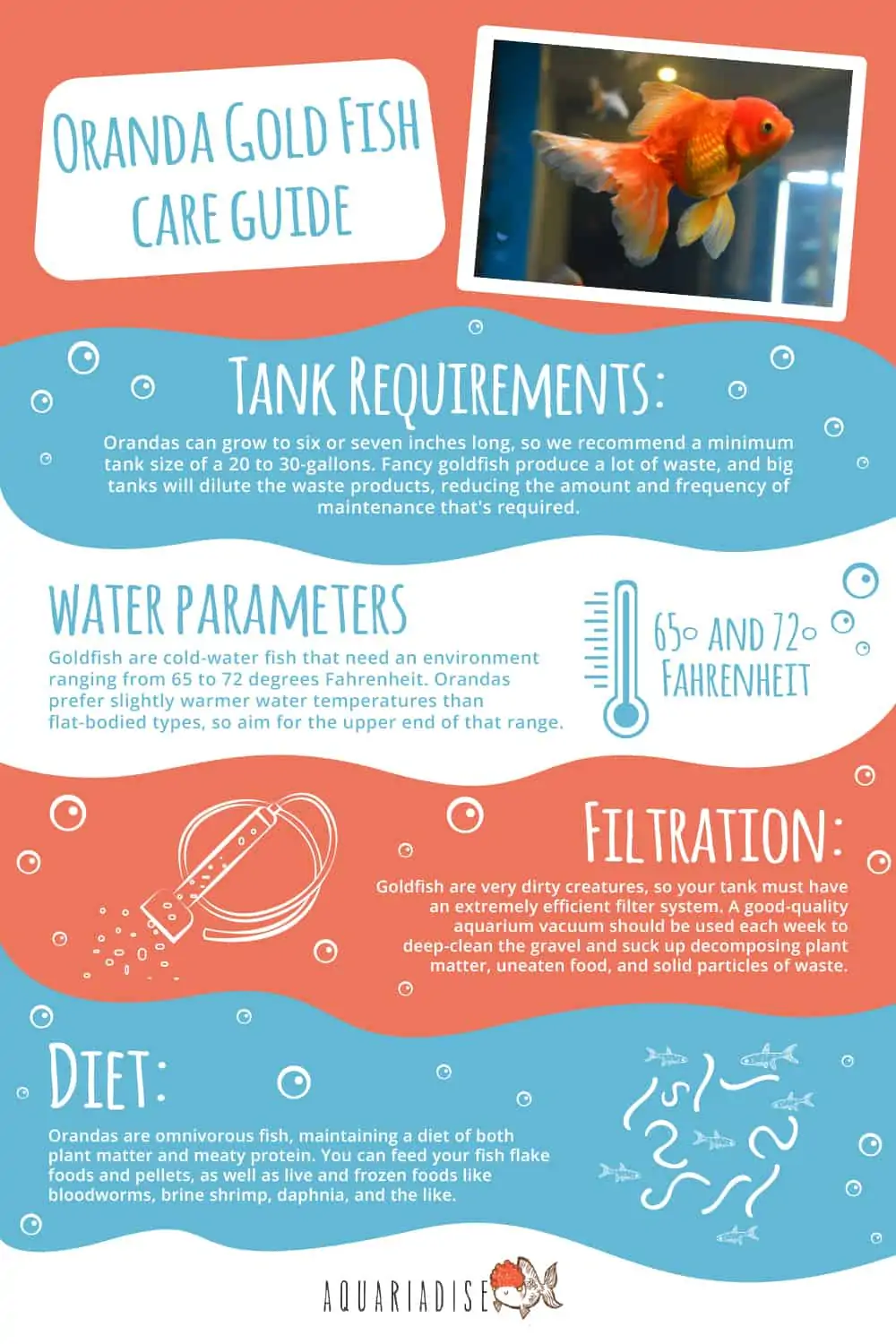
Live Food
Adding live food to your goldfish’s diet can provide them with essential nutrients and stimulate their natural hunting instincts. Options such as daphnia, brine shrimp, or mosquito larvae can be a great addition to their diet. However, it is important to ensure that the live food is safe and free from any potential parasites.
Vegetables
Goldfish are omnivorous and can benefit from incorporating vegetables into their diet. Options such as peas, spinach, and lettuce can provide essential vitamins and minerals. Make sure to blanch or cook the vegetables before feeding them to your goldfish to aid in digestion.
Tips for Feeding Goldfish
Feeding goldfish may seem straightforward, but there are several important tips to keep in mind to ensure their optimal health and well-being. Here are some valuable tips for feeding your goldfish:
Avoid Overfeeding
Overfeeding is a common mistake that can have serious consequences for your goldfish. It is important to remember that goldfish are opportunistic eaters and will continue to eat as long as food is available. Overfeeding can lead to obesity, water quality issues, and various health problems. Make sure to provide only the amount of food that your goldfish can consume within two minutes.
Monitor Eating Habits
Keep a close eye on your goldfish’s eating habits to ensure they are healthy. A sudden decrease in appetite or refusal to eat could be a sign of an underlying issue. Conversely, if your goldfish is constantly begging for food and seems insatiable, it might be a sign of overfeeding. It is important to strike the right balance and adjust the amount of food accordingly.
Variety in Diet
Just like humans, goldfish can benefit from a varied diet. Offering a variety of food options ensures that your goldfish receives a wide range of essential nutrients. Experiment with different types of food, such as pellets, flakes, live food, and vegetables, to provide a balanced and interesting diet for your goldfish.
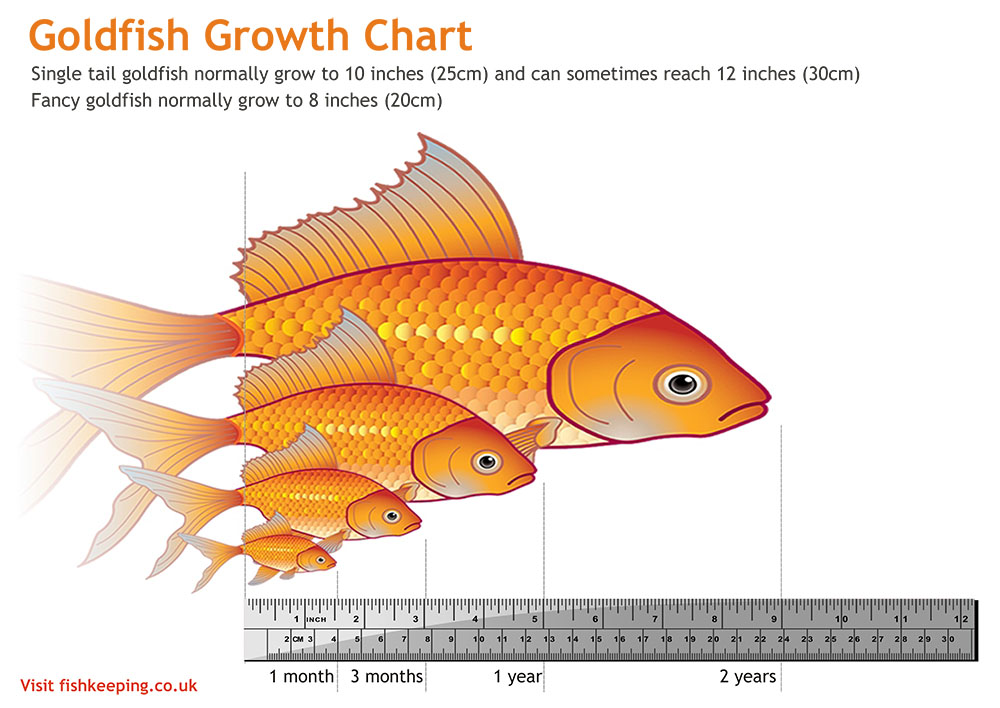
Avoid Feeding Dry Food Exclusively
While dry food such as pellets and flakes are convenient, it’s important to supplement your goldfish’s diet with other food options. Dry food lacks the water content that goldfish need for proper digestion. By incorporating live food and vegetables into their diet, you can ensure that your goldfish receives the necessary hydration and additional nutrients.
Designing a Balanced Diet
To maintain optimal health, it’s important to design a balanced diet for your goldfish. Consider the following factors when formulating their diet:
Protein and Fat Content
Goldfish require a diet that is rich in protein and low in fat. Protein is essential for growth and repair, while a low-fat diet helps prevent obesity. When selecting food options for your goldfish, look for those with a high protein content and low-fat content.
Nutritional Requirements
To meet the nutritional requirements of your goldfish, it is crucial to choose food that contains essential vitamins, minerals, and amino acids. These nutrients are necessary for their overall well-being and can be found in high-quality goldfish food. Read the labels carefully and select food options that meet their specific nutritional needs.
Supplementing Diet
While goldfish food provides the foundation of their diet, it is beneficial to supplement their meals with live food and vegetables. Live food such as brine shrimp and daphnia offer additional nutrients and stimulation for your goldfish. Vegetables, when cooked or blanched, can provide essential vitamins and minerals. By supplementing their diet, you can ensure that your goldfish receives a well-rounded and nutritious meal.
Feeding Considerations
There are certain considerations to keep in mind when it comes to feeding your goldfish during different stages of their life or specific situations. Let’s explore these feeding considerations:
Feeding during Growth
During the growth stage, goldfish require more food to support their rapid development. Adjust their feeding schedule and increase the amount of food accordingly. However, it is important to monitor their growth closely and avoid overfeeding, as this can lead to deformities or other health issues.
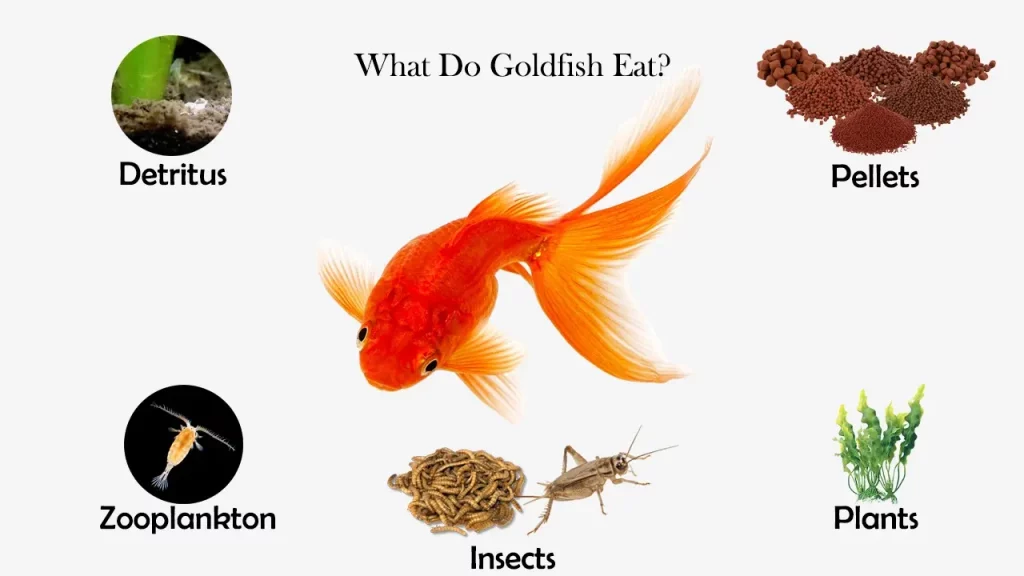
Feeding during Breeding
Breeding goldfish have additional nutritional needs to support the reproductive process. During this time, it is important to provide a diet that is rich in protein and essential nutrients. Supplement their diet with high-quality protein-rich food, such as live food or specialized breeding formulas.
Feeding during Winter
During the colder months, goldfish’s metabolism slows down, and they require fewer calories. It is important to adjust their feeding schedule and decrease the amount of food accordingly. Feeding them less during winter prevents digestive issues and helps maintain good water quality.
Feeding Goldfish Fry
Feeding goldfish fry requires special attention and care, as their nutritional needs are different from adult goldfish. Here are some important considerations when feeding goldfish fry:
Specialized Fry Food
Goldfish fry have tiny mouths and require food that is appropriately-sized and nutritionally dense. There are specialized fry food options available in the market that cater to their specific needs. These formulas are highly digestible and contain the essential nutrients needed for their growth and development.
Feeding Frequency
Goldfish fry have a higher metabolic rate and need to be fed more frequently than adult goldfish. It is recommended to feed them small amounts of food several times throughout the day. Offering frequent feedings ensures that they receive the necessary nutrition to thrive.
Gradual Diet Transition
As goldfish fry grow, it is important to gradually transition them from specialized fry food to regular goldfish food. Start by introducing small amounts of regular goldfish food alongside the fry food. Over time, increase the proportion of regular food while decreasing the fry food until they are fully transitioned to a regular goldfish diet.
Feeding Techniques
When it comes to feeding your goldfish, there are different techniques you can use to ensure they receive their food effectively. Let’s explore some common feeding techniques:

Surface Feeding
Goldfish are surface feeders and tend to eat from the water’s surface. By scattering the food on the water’s surface, you can encourage their natural feeding behavior. This technique also allows you to observe their eating habits and ensures that they have ample time to consume the food.
Sink-and-Swim
Some goldfish have a tendency to gulp air while feeding, which can lead to buoyancy issues. To prevent this, you can use the sink-and-swim technique. Simply soak the pellets or flakes in water before feeding, causing them to sink. This encourages your goldfish to swim downward while eating, reducing the risk of air gulping.
Hand Feeding
Hand feeding is a wonderful way to bond with your goldfish and promote trust. Start by holding the food between your fingers and allow your goldfish to gently nibble at it. Over time, they will become more comfortable with hand feeding and may even eat directly from your hand.
Feeding Problems and Solutions
Despite your best efforts, you may encounter some feeding problems with your goldfish. Here are common feeding problems and their solutions:
Food Wasting
Goldfish are known to be messy eaters, and food wastage can occur. To minimize food wastage, feed your goldfish smaller amounts at a time. If you notice excessive food sinking to the bottom of the tank, consider using sinkable pellets or flakes to ensure that the food reaches your goldfish before sinking.
Floating Food
Certain goldfish breeds, such as fancy goldfish, have anatomical features that make it difficult for them to reach food at the water’s surface. If your goldfish have trouble reaching their food, try pressing the flakes or pellets against the side of the tank to allow them to easily access the food.
Finicky Eaters
Some goldfish may be picky when it comes to food. If you have a finicky eater, try offering a variety of food options to cater to their preferences. Experiment with different brands, formulas, and flavors to find what they enjoy. Additionally, soaking the food in garlic juice can help entice a reluctant goldfish to eat.
Competitive Feeding
In a tank with multiple goldfish, there may be instances of competitive feeding, where one fish dominates the feeding area and prevents others from eating. To mitigate this issue, spread the food over a larger area or use feeding rings to create separate feeding zones. This allows each goldfish to have equal access to the food and prevents bullying.
Feeding Do’s
To ensure the health and happiness of your goldfish, here are some important feeding do’s to keep in mind:
Do Observe Fish Behavior
Pay close attention to your goldfish’s behavior during feeding. Observe their appetite, eating habits, and overall behavior. Any sudden changes in behavior could be an indication of an underlying health issue that needs to be addressed.
Do Feed High-Quality Food
Investing in high-quality goldfish food is crucial for their overall health and well-being. Look for food that is specifically formulated for goldfish and provides the necessary nutrients they need. High-quality food will support their growth, enhance their coloration, and boost their immune system.
Do Provide Variety
Offering a variety of food options not only keeps feeding time interesting for your goldfish but also ensures they receive a well-rounded diet. Incorporate different types of food, such as pellets, flakes, live food, and vegetables, to provide a diverse range of nutrients.
Feeding Don’ts
To avoid potential health issues and maintain a healthy environment for your goldfish, here are some important feeding don’ts:
Don’t Overfeed
Overfeeding is one of the most common mistakes made by goldfish owners. Avoid the temptation to feed your goldfish excessively, as it can lead to obesity, swim bladder disorders, and poor water quality. Stick to the recommended feeding amounts to keep your goldfish healthy and happy.
Don’t Feed Human Food
Human food may contain ingredients that can be harmful to goldfish. Avoid feeding them food intended for human consumption, as it may be high in salt, sugar, or other additives that can cause health problems. Stick to specially formulated goldfish food for their dietary needs.
Don’t Feed When Water Temperature is Low
During periods of low water temperature, goldfish’s metabolism slows down, and their digestive system becomes less effective. It is important to avoid feeding them when the water temperature is low, as they may not be able to digest the food properly. Resume feeding when the water temperature rises to a suitable level.
In conclusion, feeding your goldfish a proper diet is essential for their overall health and well-being. By following a feeding schedule, providing the right types of food, and being mindful of their nutritional needs at different stages, you can ensure that your goldfish thrives. By incorporating variety, monitoring their eating habits, and utilizing different feeding techniques, you can create a positive feeding experience for both you and your goldfish. Remember to observe their behavior, feed high-quality food, and avoid common feeding pitfalls to keep your goldfish healthy and happy.

